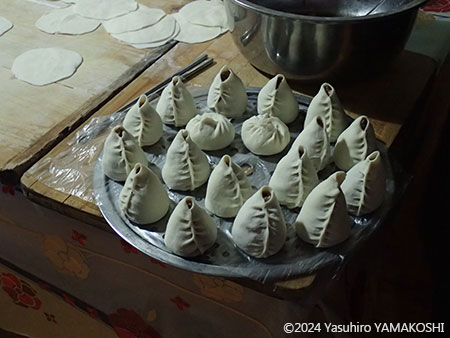Photos taken by ILCAA staff and associates are posted here once a month; most of them are taken during their field research in Asia and Africa.
(The copyright belongs to the photographers.)
Monk’s buuz

“Buuz” (or “buuza” in Buryat) is one of the most typical Mongolian dishes. It is made by steaming a dough wrapper filled with meat and a small amount of vegetable filling. In the photo, you can see “buuz” before they are steamed. The shape is generally similar to a Chinese “xiaolongbao,” though it is about twice the size. However, there are variations in how it is wrapped. The family I stayed with often made conical-shaped “buuz” like those in the photo. The Buryat people call these conical ones “lambagai buuza” (monk's buuz) because they resemble Buddhist monks in their robes, chanting sutras. I can't help but smile to myself whenever I see them, because in Japanese, Buddhist monks are called “boozu.” “Boozu's buuz”—it sounds funny and fitting.
November 6th, 2016
Khölönbuir (Hulunbeier), Inner Mongolia, PRC
Photograph by Yasuhiro YAMAKOSHI
Copyright © 2010 Research Institute for Languages and Cultures of Asia and Africa. All Rights Reserved.
